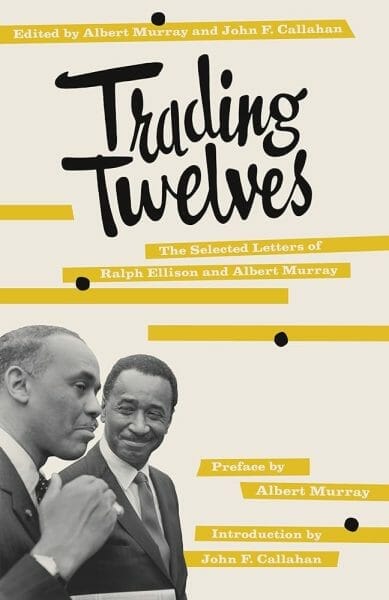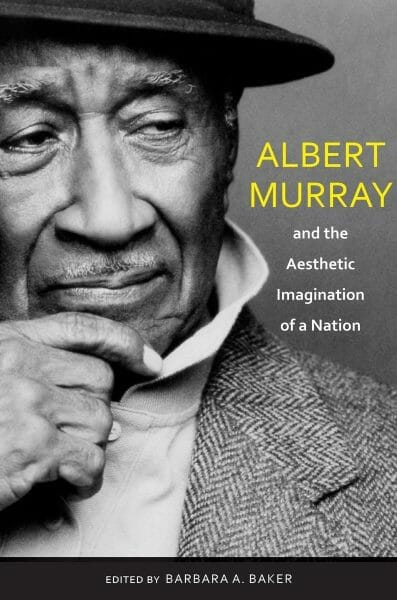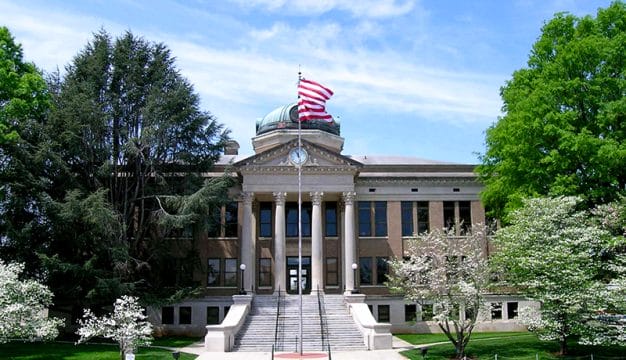Albert L. Murray
 Albert Murray
Escambia County native Albert Lee Murray (1916-2013) was a noted music, social, and literary critic who won international acclaim for his novels, short stories, essays, and poems. His writings include the “Scooter” series of semi-autobiographical novels, cultural analyses such as The Omni-Americans, and seminal works on the influence of jazz and the blues on American culture. Murray often explored and celebrated the richness that arises from the intersection of African American and American culture. His most noteworthy contribution to American writing, however, was creating a unique style using elements of black cultural traditions—the rhythms of black southern speech, folklore, cultural heroes, the blues, and jazz—that influenced him during his coming of age in Alabama.
Albert Murray
Escambia County native Albert Lee Murray (1916-2013) was a noted music, social, and literary critic who won international acclaim for his novels, short stories, essays, and poems. His writings include the “Scooter” series of semi-autobiographical novels, cultural analyses such as The Omni-Americans, and seminal works on the influence of jazz and the blues on American culture. Murray often explored and celebrated the richness that arises from the intersection of African American and American culture. His most noteworthy contribution to American writing, however, was creating a unique style using elements of black cultural traditions—the rhythms of black southern speech, folklore, cultural heroes, the blues, and jazz—that influenced him during his coming of age in Alabama.
Murray was born on May 12, 1916, in Nokomis, Escambia County, a small town on the Florida-Alabama border. Shortly after his birth, he was adopted by Hugh and Mattie Murray and moved with them to Magazine Point, a small community on the outskirts of Mobile. Murray’s early life closely resembles that of Scooter, the hero of his novel Train Whistle Guitar, who is given to foster parents at birth by a young woman who remains active in his life as his aunt. Like Scooter, Murray, at age 11, accidentally discovered that Hugh and Mattie were not his biological parents.
Murray completed his early education at Mobile County Training School. An excellent student, he was awarded a scholarship to Tuskegee Institute (now Tuskegee University), where he developed an interest in jazz music and in literature and writing. Also at Tuskegee, he became aware of Ralph Ellison, who was an upper classman during Murray’s freshman year and who was to achieve fame as the author of the timeless American classic Invisible Man. Later, in New York, the two writers would form a lasting friendship.
Murray graduated from Tuskegee Institute in 1939 and attended graduate school at Northwestern University and the University of Michigan. He then taught English and American literature and directed theater at Tuskegee. After the outbreak of World War II, Murray entered the U.S. Army Air Corps in 1943 and served until 1946. After the war, he transferred to the U.S. Air Force Reserve and returned to teach at Tuskegee. Also in 1946, Murray married Mozelle Menefee, with whom he had one daughter, Michelle. Murray earned a master’s degree in literature from New York University in 1948 and spent summers studying in Paris at the Sorbonne. Recalled to active duty in the U.S. Air Force in 1951, Murray spent four years as the head of the ROTC program at Tuskegee, served on assignments in the United States and in Morocco, and retired from the Air Force with the rank of major in 1962. He then settled in New York and began his career as a full-time writer.
Murray’s first book, The Omni-Americans, published in 1970, is a collection of essays that first appeared under the subtitle New Perspectives on Black Experience and American Culture but was later republished carrying the subtitle Some Alternatives to the Folklore of White Supremacy. As both subtitles reveal, Murray’s intent as a writer is to offer the reader a new appraisal of African American culture and its place in the American experience. Murray followed The Omni-Americans with his memoir, South to a Very Old Place (1971), which begins in New York and moves southward. Along the way, Murray weaves into his personal journey insights about the value of the southern black experience in places such as Mobile and Tuskegee to American life. These first two books define the overarching themes and set the tone for much of Murray’s later work.
In his writing, Murray presents an authentic analysis of African American life as he knew and lived it. As he does so, he neither ignores nor apologizes for the negative elements in the community that cause people to define African Americans as social problems—elements such as the poverty and crime resulting from a long tradition of slavery, segregation, discrimination, and racism. But he does strongly challenge the negative, oversimplified images that both blacks and whites represent as the common experience of all African Americans. Murray insists on portraying and celebrating the positive, nurturing qualities of African American life and the complexity of the culture.
Throughout his writings, Murray recreates the varied and colorful styles of speech and storytelling found in African American communities; his language flows and sways with the rhythms and beats of the blues and jazz. He develops characters, based on people from his own Alabama childhood, who are positive role models and teachers for the young. And he examines the lives and the contributions of notable African Americans in literature, the arts, and music.
The celebration of African American culture also is a central theme of Murray’s four novels, semi-autobiographical narratives that exhibit some parallels to Murray’s own life. In the first novel in the series, Train Whistle Guitar, (1974) the main character, Scooter, finds himself immersed in and creatively nurtured by the black folk culture of Gasoline Point, a small community near Mobile in the 1920s. In The Spyglass Tree (1991), set in a college in Alabama similar to Tuskegee Institute during the 1930s, Scooter is a serious student who reads extensively in the library and “studies” music at a local jazz club, where he acquires a bass fiddle from the club’s star blues singer. In The Seven League Boots (1996), Scooter is a bass player with a touring jazz band; he visits Europe, plays in a small jazz club, and finally returns home. The Magic Keys (2005), the final novel in the cycle, follows Scooter to New York City, where he marries, attends graduate school, explores Manhattan and Harlem, and establishes friendships with black writers, artists, and musicians. At the end of the novel, he prepares to fulfill his own destiny as a writer.
Four of Murray’s nonfiction books focus on fostering a greater appreciation of the blues and jazz as musical genres that inform American life and art: The Hero and the Blues (1973), Stomping the Blues (1976), and The Blue Devils of Nada: A Contemporary American Approach to Aesthetic Statement (1996). Murray also cowrote a biographical work with jazz legend William “Count” Basie, Good Morning Blues: The Autobiography of Count Basie (1985).
Murray enjoyed a distinguished career as writer, teacher, and lecturer at universities that include Colgate University, Washington and Lee University, the University of Massachusetts, and the Free University of Berlin. Murray was one of the original founders (with Wynton Marsalis) and a board member of Jazz at Lincoln Center. He also received numerous honors and awards for his stellar contributions to American letters, including the Lifetime Achievement Award from the National Book Critics Circle, membership in the American Academy of Arts and Letters and the American Academy of Arts and Sciences, and the DuBois Medal from the W. E. B. DuBois Institute for African and African American Research, Harvard University.
Murray continued to work and live in New York City until his death on August 18, 2013. His papers are held by the Houghton Library of Harvard University.
Videos
Further Reading
- Baker, Barbara A., ed. Albert Murray and the Aesthetic Imagination of a Nation. Tuscaloosa: University of Alabama Press, 2010.
- Carson, Warren. “Albert Murray: Literary Reconstruction of the Vernacular Community.” African American Review 27 (Summer 1993): 287-95.
- Murray, Albert, and Roberta S. Maguire. Conversations with Albert Murray. Jackson: University Press of Mississippi, 1997.





